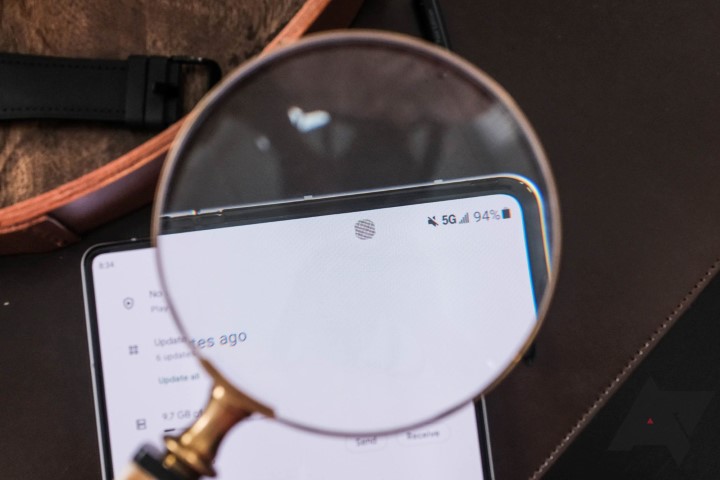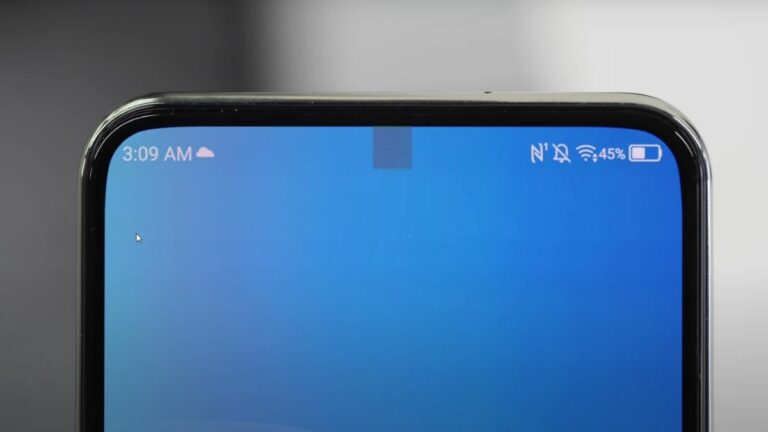Phone makers have been working to eliminate or at least reduce bezels surrounding the screen for years. To assist maximise screen real estate, they've tried hole punch cuts and even small pop-up cameras. However, under-display cameras, which are fully hidden from view, are becoming increasingly popular. You might have a flawless seamless screen with nothing breaking up the image on your screen with them, or at least that's the dream. With the recent release of three phones that use this technology, that fantasy is now becoming a reality. The Samsung Galaxy Z Fold 3, Xiaomi Mix 4, and ZTE's Axon 30 are all available now. Is the sacrifice of a notchless phone worth the lower quality of the front-facing camera.
The concept itself isn't particularly novel. For a long time, companies like Microsoft have been developing under-display cameras. However, it has yet to appear in consumer items like as phones. Now, having a screen without a notch or a hole punch is fantastic, but the area around the camera was much more distracting than having a notch, and the camera quality was, to put it kindly, appalling.
However, concealing a camera beneath a phone screen is no easy task. It's kind of like looking through a screen door, so if you're looking through a screen door and you have a camera through the screen door, you can see through it, but as a display's resolution increases, the screen door becomes more dense, making it difficult to see through and causing you to lose a lot of light. Not only that, but you also lose a lot of light and get things like diffraction, which really affects where the light goes. So we can place a camera behind a really huge display because the pixels are big, which means there's a lot of space that isn't a pixel, but when you get incredibly small displays, like the ones on the market now, the pixels are really packed. In a lot of circumstances, you're talking about 400 DPI. So, what do you do now, since that's a really difficult screen door to snap an photo through.
Also Read: What is Google's New Predictive Back Gesture in Android 13
The initial generation of under-display cameras in smartphones addressed this issue by lowering the pixel density in the camera's coverage area. As a result, there was less lens obstruction, allowing more light to reach the sensor. However, the image quality is still inferior to that of standard selfie cameras. Not to add that the location of the camera was clearly marked by a distracting low-resolution patch. By adopting a better wiring technology that allows somewhat more light to penetrate the lens, newer generation phones are able to keep a greater pixel density of roughly 400 PPI directly above their cameras. Even though this reduced about 80% of the light that would otherwise strike the lens, the results were still poor, especially in low light.
So there's always a balancing act to be done, a trade-off to be made. You know, you take a camera that would struggle in a dark setting and you make things even more difficult for it. So, where do you go to solve the problem? You try your best on the optics side, and I believe that someday the optics and display technology will be able to help them get maybe only 40% of the light through instead of 20%, but you're still losing about 60%. After that, you'll have to rely on computation for the rest. To compensate for these optical flaws, manufacturers across the board must rely on software to overcome the hurdles that remain with their hardware.
So, using AI and neural networks to perform things that cameras in phones do pretty well today, such as taking dark photos and using AI to try to recover as much detail as possible. Correct for any artefacts or aberrations created by the screen door effect at the same time. It's a dilemma with two sides. You must solve it in optics and, at the end of the day, you must solve it using computation. However, in both cases, you're making it difficult for the camera to get a beautiful image.
So, the two phones I used for this evaluation are both newer generations of this under-display camera technology. The Xiaomi Mix 4 and the ZTE Axon 30 are two smartphones from Xiaomi. They both have a 400 PPI area built into the OLED panel that covers the screen. And it's difficult to see, especially with the naked eye. Previous phones with under-display cameras featured a rough, low-pixel density area that, to be honest, I felt looked worse than a notch, and it was quite distracting. But I believe it looks amazing here, especially on the Mix 4, which is a very nice-looking phone.Unless you're looking really, really closely at an angle or on a white background, you can barely see the camera beneath the screen, but you can't actually see it.
Also Read: Huawei P50 Pocket Foldable Review in detail
The issues arise when you open the cameras themselves, and it's evident just by looking at the live view stream that these cameras are working with some major technical restrictions, such as the image being blurry and blown out. And it does get better after you take the photograph. So if I pop it, the sharpness and exposure are slightly enhanced after it processes, but it's still not the best selfie camera around.Maybe it's worth it for certain folks who don't care about the quality of their selfies or zoom calls. However, if you care about image quality or want to capture selfies in low light, you'll discover that the technology isn't quite there yet, at least not for phones.
Customers might perceive an immediate benefit in the lack of a notch, but front cameras are also used for a variety of other tasks, like as biometric verification and Windows Hello, so you'll have to squeeze more stuff in there, and it's unclear whether biometrics can be done behind a screen like that. So, are you truly helping to solve a problem? I'm still undecided. As a result, I believe it will be difficult. I also believe that some people prefer to see where the camera is, so I'm not sure whether it is or not.The customer will benefit from the lack of a notch and the possibility of thin bezels at the top and bottom. That might have some aesthetic benefits, but it's very difficult to say. I'd say in any situation like this, there are basically advantages and downsides, and you just have to think it through, and it depends on the product you're trying to produce and the experience you're trying to offer.
Microsoft's R&D team has concentrated its efforts with under-display cameras on larger video conferencing devices. They aren't attempting to solve the cosmetic issue of removing bezels or notches, but rather are addressing a very real-world issue: maintaining eye contact during video conversations.
"I was particularly concentrated on attempting to address the challenge for telepresence," the Spoke person stated. And we've been working in this field for at least 15 years, trying to enable people connect via video conferencing while making it feel real. And one of the problems you want to solve there is to make the window look like a real window, so I'm talking to you through a real window rather than a computer screen, which is very two-dimensional and doesn't take into account where you're looking or where you're standing like a real window does, and I also wanted to do and solve for the cues that are really important in person to person communication, like eye contact."
We're working on a number of different research projects, both optical and computational, to solve the challenge. And, of course, putting cameras beneath the display for the sake of putting the camera where it needs to be to aid with eye contact, because if the camera is where you're looking, you're making eye contact, and also to hide the camera from the bezel, is one of the wonderful applications.
Also Read: Will Apple Upcoming Iphones get rid of Touch ID?
It's worth noting that the team member stated that the technology is only possible with plastic OLED screens, which explains why it's first appearing in phones. Because LCDs are used in most work machines, such as laptops, it will be a while before under-display cameras start to appear in shipping devices. However, Microsoft's efforts indicate that the concept can be used for more than just lowering phone bezels. Right now, it's more of a fun curiosity than anything else, and I wouldn't recommend buying a phone solely because of this function. However, these things tend to improve over time, so who knows, maybe cameras beneath the screen may become as prevalent as fingerprint sensors in the near future.
I don't mind the bezels, if I have to talk from my own personal experience. I believe that the bezel is an excellent spot to put technology, and I don't want anything less than the best front camera available.









0 Comments